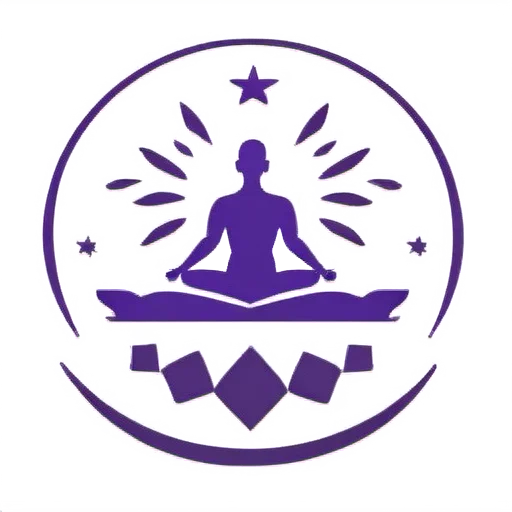Meditation is a simple technique that nearly everyone can master and benefit from. For both beginners and advanced practitioners, sitting postures remain the most commonly used meditation pose, including High Sitting (Maitri Asana),Easy Pose (Sukhasana), Auspicious Pose (Swastikasana), Zen Sitting Position (Vajrasana), Accomplished Pose (Siddhasana), and Lotus Pose (Padmasana). Regardless of which posture is chosen, consistent practice is essential – one shouldn’t frequently abandon halfway to experiment with new positions.
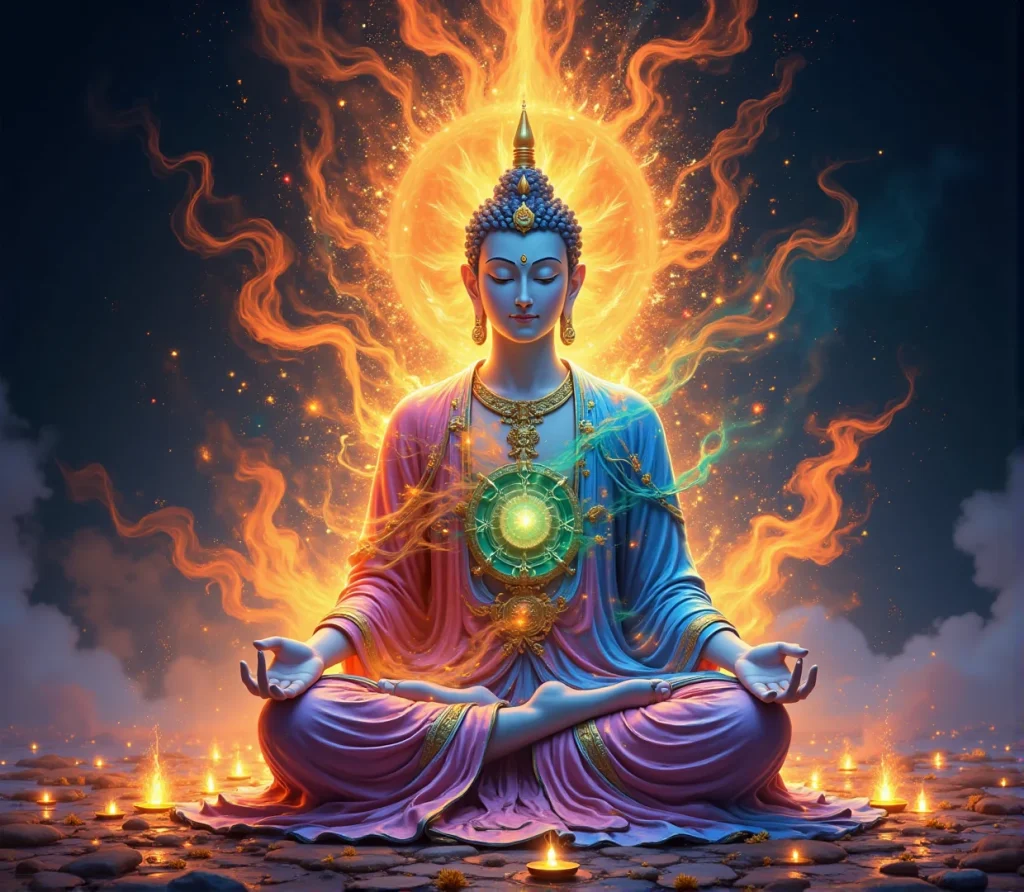
As all meditation masters emphasize, meditation can begin as long as one sits quietly and comfortably in a relaxed, stable posture. The body should remain still with steady breathing, while maintaining a calm and focused awareness. High-quality meditation postures require four essential qualities: stillness, stability, relaxation, and comfort. Any body movements, swaying, twitching, or pain will disrupt practice. Some mistakenly believe the complex lotus position with crossed legs is mandatory for meditation, but this isn’t true. The only prerequisite for an effective meditation posture is keeping the head, neck, and upper torso vertically aligned to allow free diaphragmatic breathing.
In all meditation postures,The head and neck must maintain central alignment. This means:
- The neck shouldn’t bend or tilt sideways
- The head shouldn’t droop forward excessively
- The neck should fully support the head perpendicular to shoulders
This alignment avoids creating pressure on the neck and shoulders. The face should face forward with eyes gently and naturally closed without tight squeezing, which creates eye strain.
Unfortunately, some teachers instruct students to focus inner gaze (Drishti) at the center of the forehead. This practice actually causes eye muscle tension and may induce headaches. While certain “gazing” techniques exist in yoga, they’re unnecessary during meditation. Simply relax facial muscles, keep lips softly closed without jaw tension, and maintain nasal breathing throughout.
Across all postures:
- Shoulders and arms should remain completely relaxed, resting gracefully on knees
- Arms should be so relaxed that if lifted, they’d drop naturally
- Gently connect thumb and forefinger to form “Mudra” (see illustration below)
This hand position creates a small circular energy pathway symbolizing internal energy circulation:
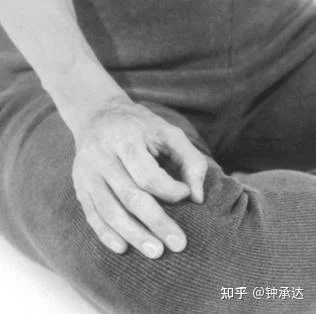
1.High Sitting (Maitri Asana)
Many sitting positions can maintain spinal verticality without requiring leg crossing or discomfort. In fact, complete spinal uprightness constitutes the most crucial element of meditation, far outweighing arm/leg arrangements. The simplest posture achieving this is High Sitting.
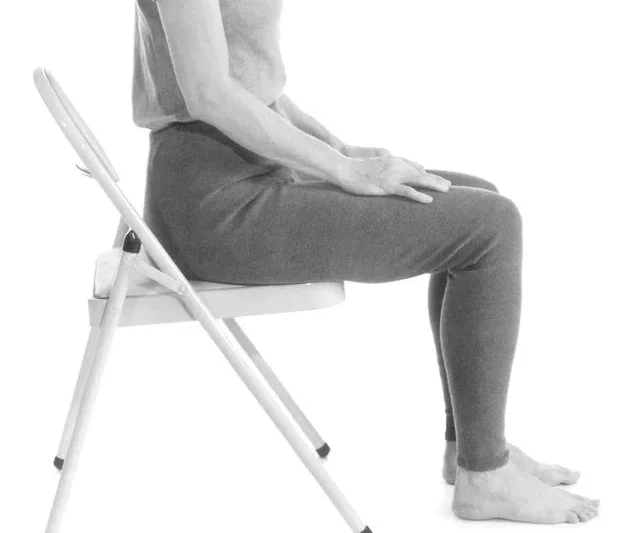
In Maitri Asana:
- Sit comfortably on a chair or bench
- Keep feet flat on the floor
- Rest hands on thighs
This posture suits everyone, especially those with limited flexibility or unaccustomed to floor sitting, as it causes no physical strain.
2.Easy Pose (Sukhasana)
For more flexible practitioners, Easy Pose (see illustration) offers another option:
- Sit cross-legged with each foot under the opposite knee
- Knees gently rest on corresponding feet
Recommended to sit on a thick folded blanket to protect knees/ankles from excessive pressure.
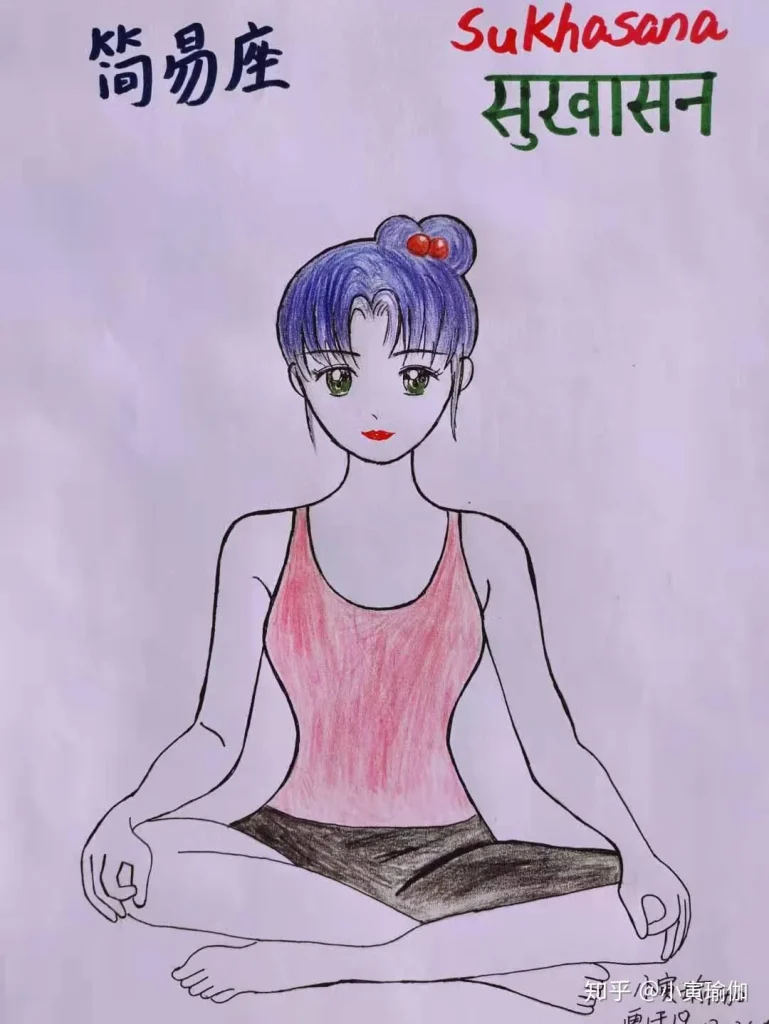
For those with tight leg muscles or knees floating high:
- Place folded cushions under hips
- Perform warm-up stretches to increase flexibility
Consistent practice of any chosen posture gradually enhances stability and comfort.
3.Auspicious Pose (Swastikasana)
Those who master Swastikasana (see illustration) gain significant benefits. For flexible practitioners, this posture surpasses Easy Pose for extended meditation due to:
- Wider base distributing body weight evenly
- Reduced swaying potential
- Direct knee contact with floor (unlike Sukhasana)
- Reduced ankle pressure for some students
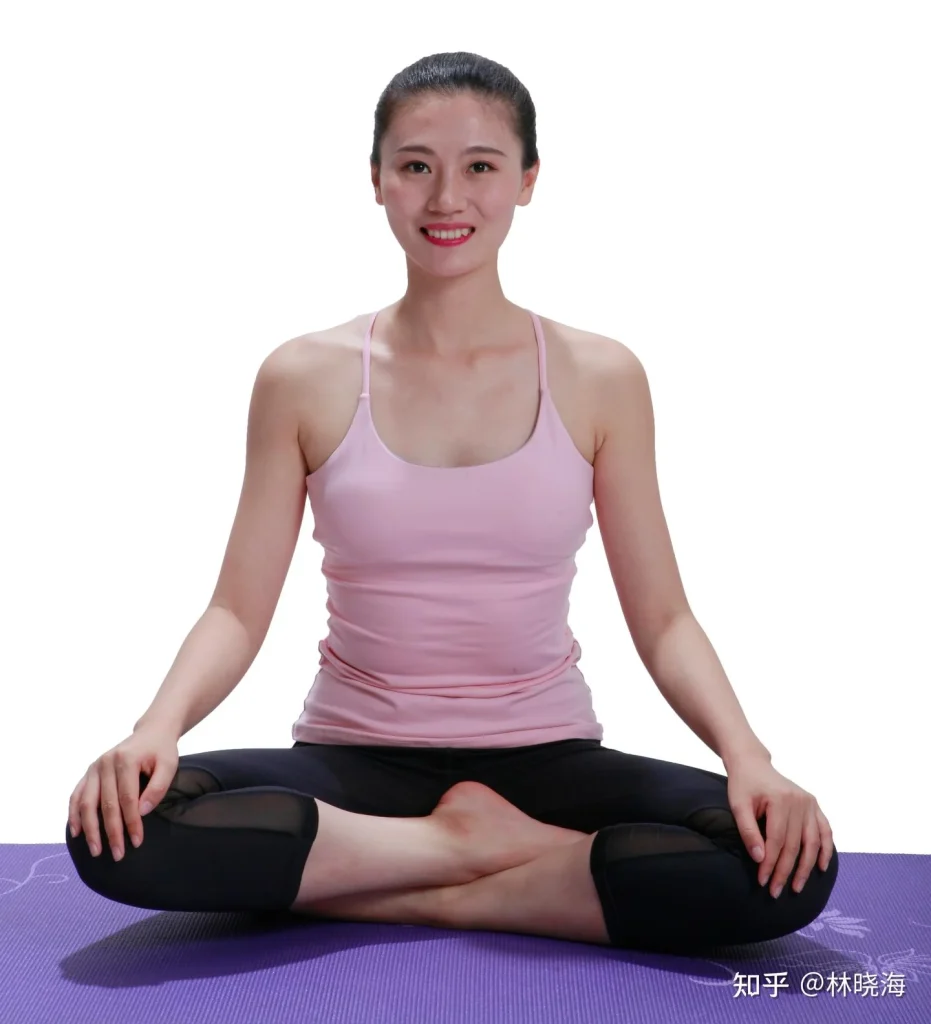
Execution steps:
- Sit comfortably on meditation seat
- Bend left knee, place left foot against right inner thigh
- Bend right knee, place right foot over left calf
- Position right foot against left inner thigh
- Tuck right toes between left thigh/calf
- Gently hook left toes between right thigh/calf
Though seemingly complex, this symmetrical posture becomes manageable with practice.
Beginner Advice:
New practitioners may experience initial discomfort with Swastikasana. Any stable cross-legged position or High Sitting works acceptably. Remember: Proper alignment of head-neck-torso and vertical spine outweighs leg positioning.
4.Zen Sitting Position (Vajrasana)
For those with hip/knee issues who find cross-legged sitting difficult, the kneeling Zen position (sitting on heels) presents an alternative.

However:
- Direct floor sitting overstretches feet/ankles
- Use wooden meditation benches to redistribute weight
- This position tends to instability during long sessions
Though suboptimal, it remains the best option for some physically constrained students.
5.Accomplished Pose (Siddhasana)
Traditionally taught only to advanced male practitioners (see illustration), Siddhasana (Warrior Pose) requires precise execution for benefits. Improper practice causes harm rather than benefits. Key points:
- Perform perineal contraction (Mula Bandha)
- Place left foot at perineum (between anus and genitals)
- Position right heel above pubic bone
- Align ankles vertically or stack them
- Tuck right toes between left thigh/calf
- Place hands on knees
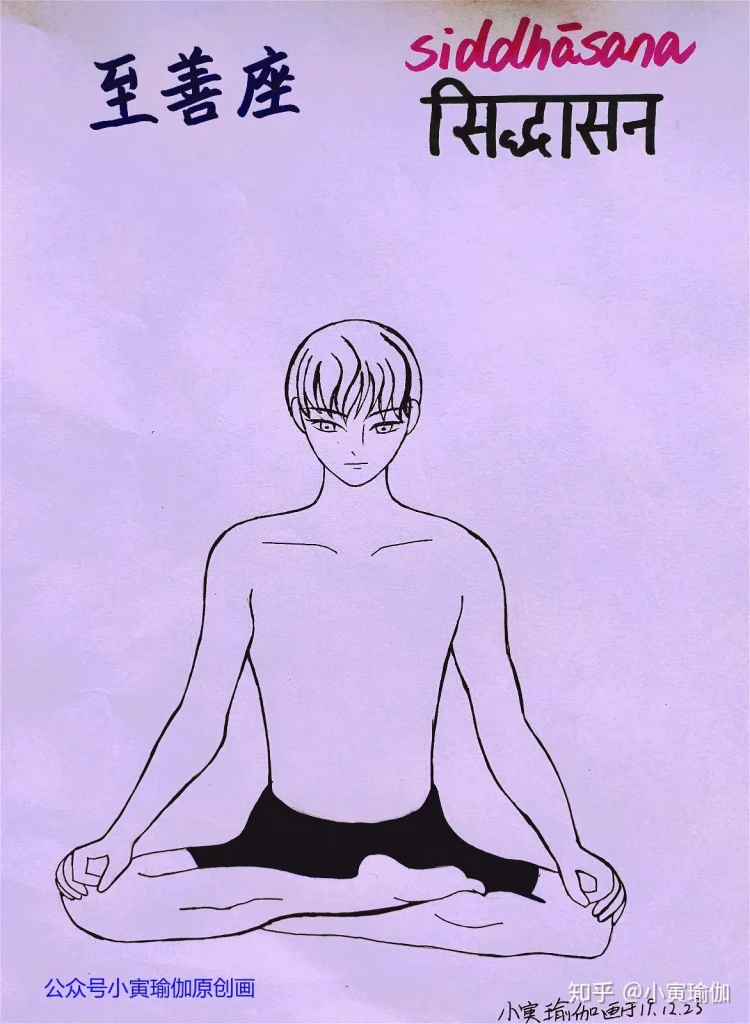
We don’t recommend this posture without direct guidance. Though historically taught to male monks, female practitioners can also use it.
6.Lotus Pose (Padmasana)
Generally unrecommended for meditation except for advanced practitioners. Difficulties include:
- Rare proper execution
- Incompatibility with essential Bandha (energy lock) practices
- Physical discomfort distracting focus
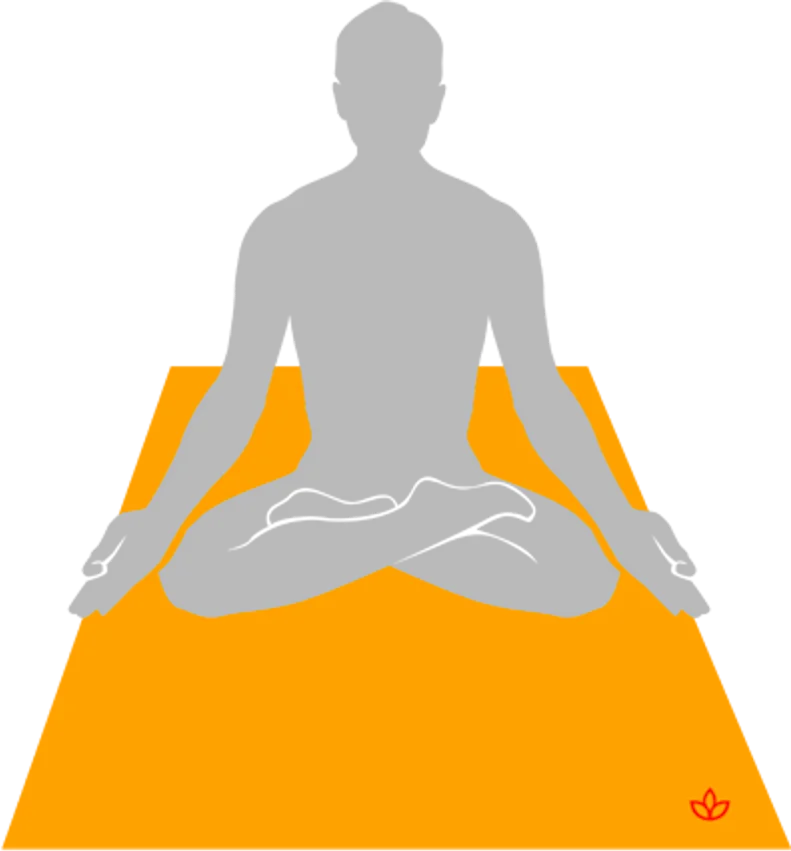
Though culturally iconic (symbolizing purity like lotus in mud), advanced practitioners prefer Siddhasana. Use Lotus Pose only for flexibility training, not meditation.
General Recommendations
- Most practitioners progress steadily using the first three postures
- Use folded blankets/pads for cushioning
- Elevate hips with thick cushions to:
- Reduce hip/knee pressure
- Facilitate spinal alignment
- Gradually reduce padding thickness as flexibility improves
- Maintain vertical spine – slouching negates benefits
- Strengthen back muscles through:
- Daily posture awareness
- Hatha yoga poses (Cobra, Boat, Bow, Child’s)
- Avoid lying down meditation due to:
- Sleep tendency
- Broken spinal alignment disrupting subtle energy flow
(Discussed in advanced texts like “Path of Fire and Light”)
Special Notes
- Avoid premature adoption of advanced postures causing:
- Hunched shoulders
- Spinal curvature
- Breathing obstruction
- Energy channel blockage
- Modern posture degeneration stems from childhood habits. Common initial challenges include:
- Weak back muscles
- Forward slumping within minutes
- Temporary wall support permitted for beginners checking alignment, but cultivate independent sitting ability. Verify vertical spine by:
- Palpating spine (no protruding vertebrae)
- Mirror checks
- Partner assistance
Through consistent practice and postural mindfulness, practitioners gradually develop the physical foundation for profound meditation. Remember: Stability and comfort always supersede positional complexity.
Struggling to turn theory into practice? Click here,Start Your Free Audio-Guided Meditation Now!
